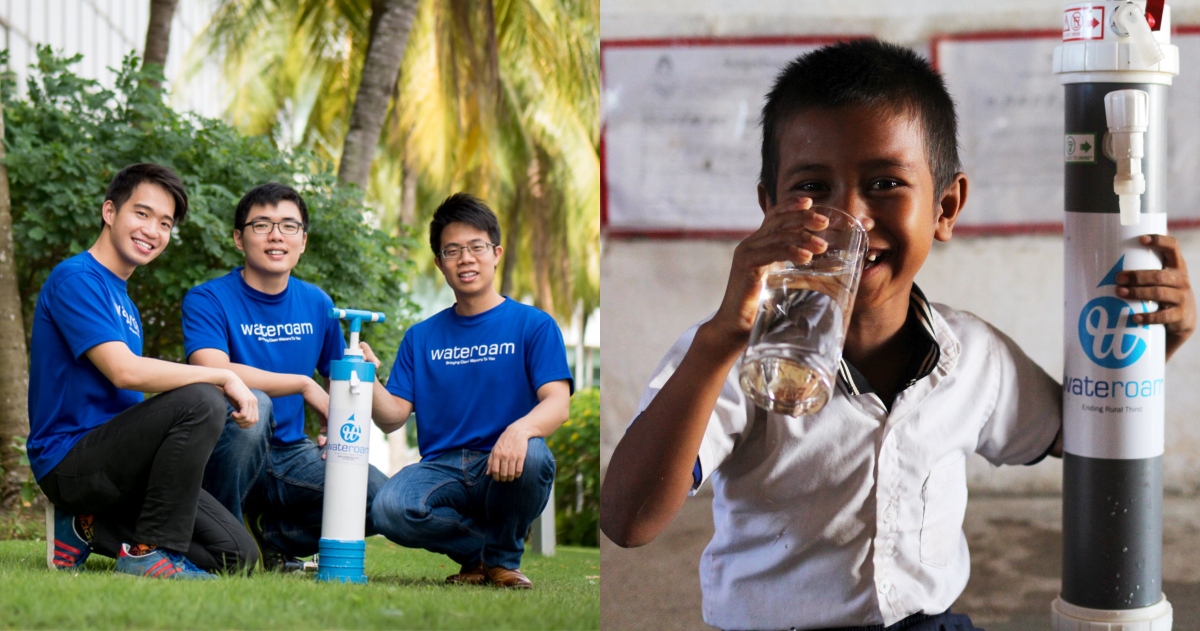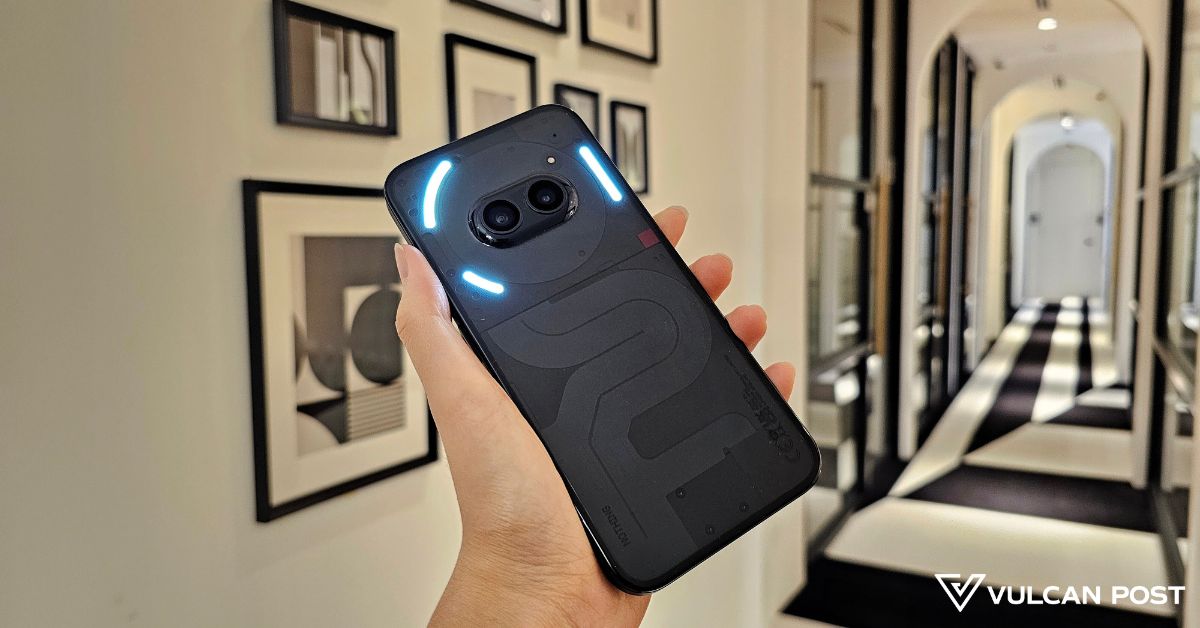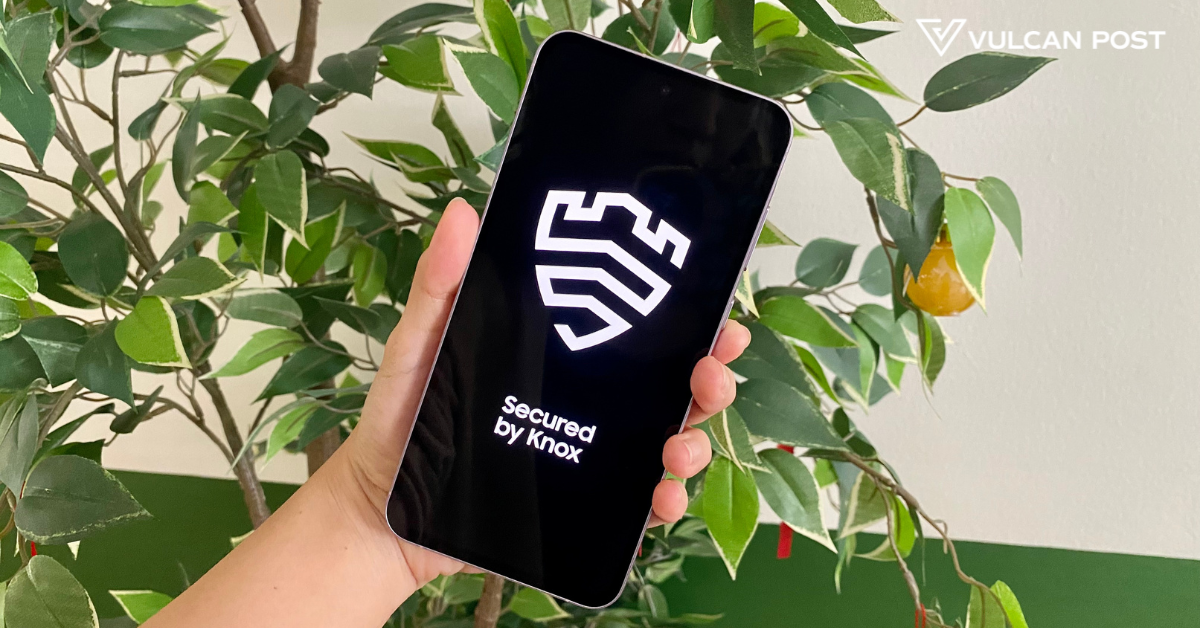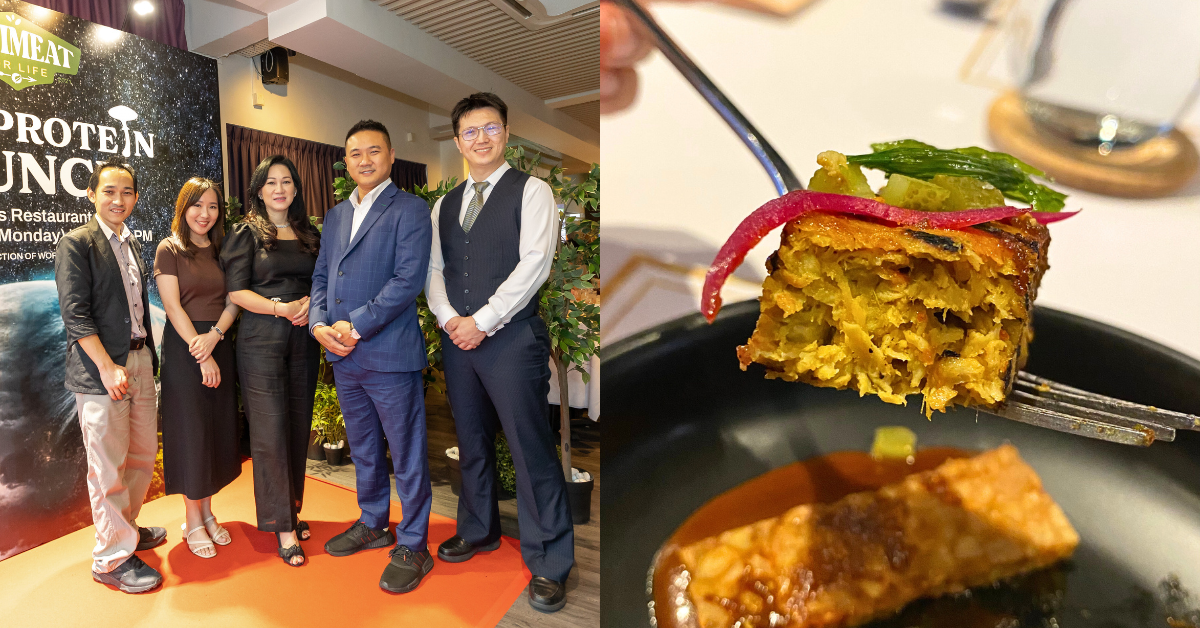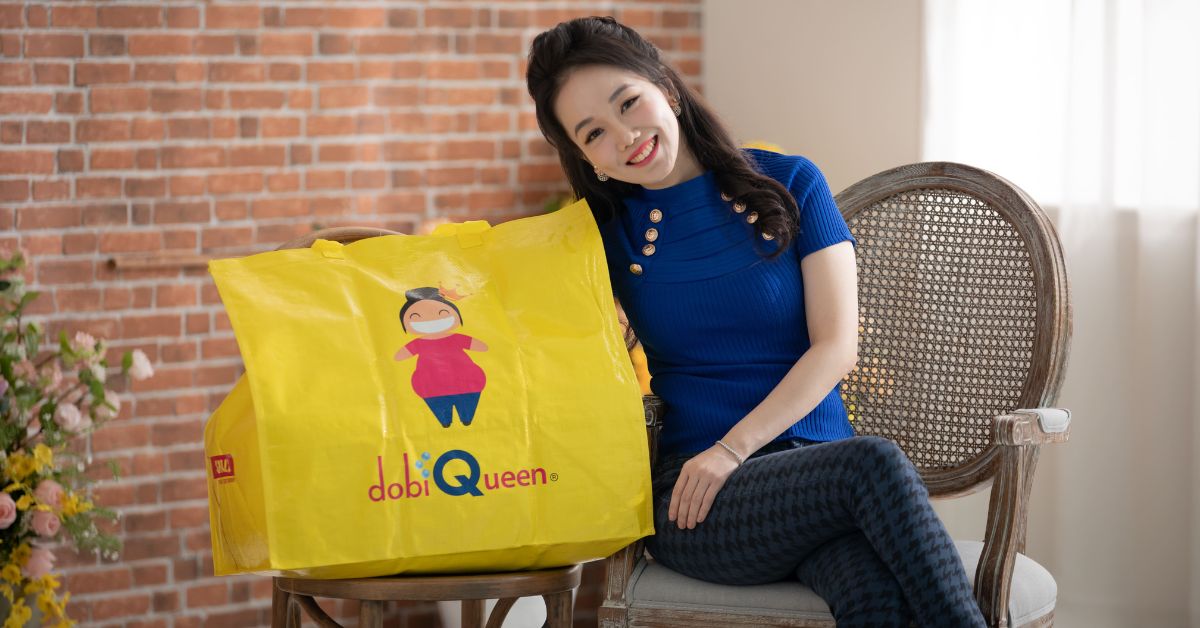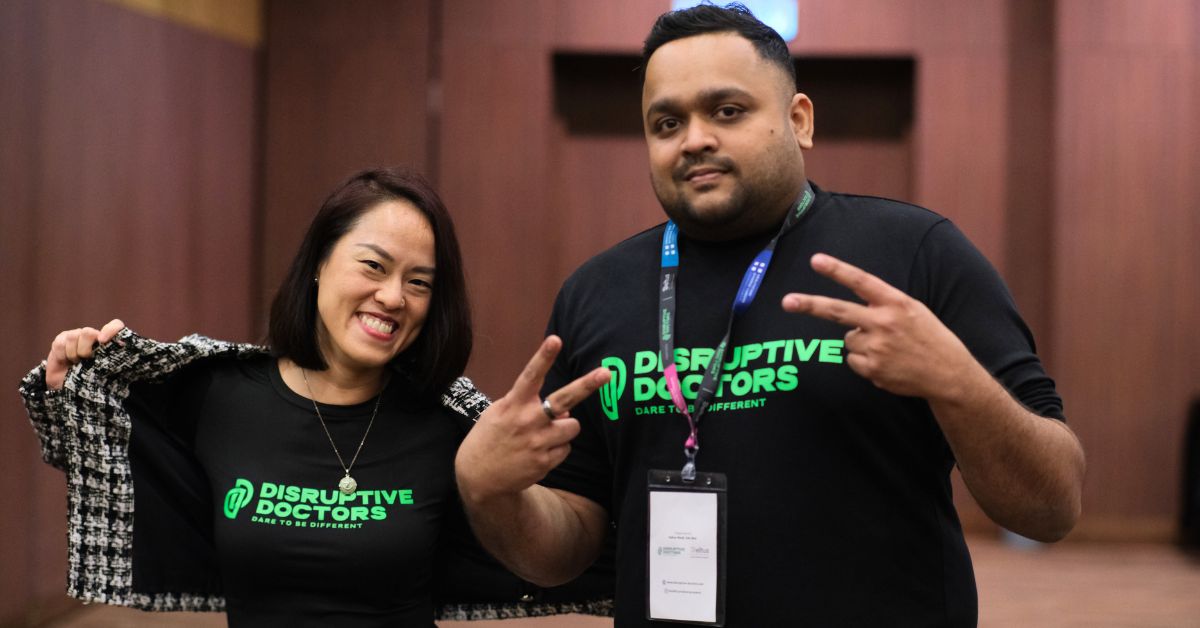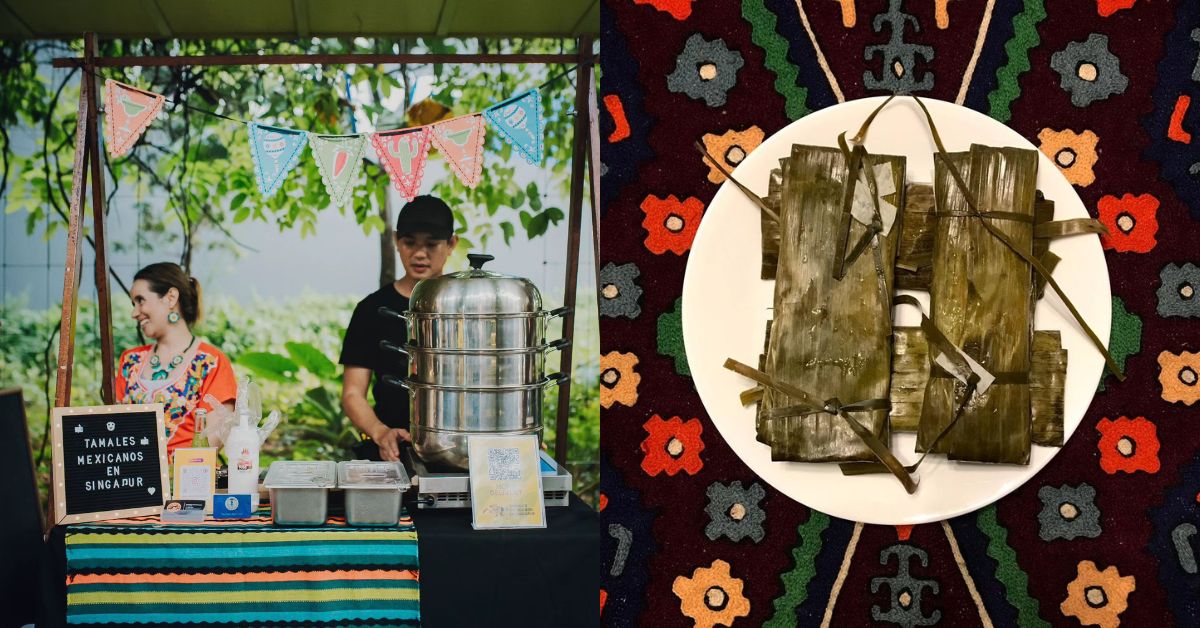On an overseas trip to Cambodia as an undergraduate, Chong Tee vividly remembers seeing a little boy standing in front of a murky well filled with insect larvae. The boy had his hands cupped as he leaned over and drank a handful of the well water.
Despite his awareness that globally, access to clean water was an issue, that moment impacted Chong Tee. Perturbed by the encounter, he made a personal oath to ensure no one would have to live with drinking water of that condition.

In 2014, Chong Tee, and co-founders David and Vincent conceived Wateroam. The three met through a Hydropreneur Programme – an accelerator programme started by Public Utilities Board (PUB) and National University of Singapore (NUS) enterprise.
They identified Asia’s lack of access to clean water would exacerbate during a disaster. A vast number of people are forced to drink water straight from potentially contaminated sources like rivers and lakes especially in rural areas.
Despite their different disciplines, David from Business, and Vincent and Chong Tee from Engineering, their like-mindedness for a world without prolonged thirst fueled Wateroam’s development.
Addressing a global challenge
Wateroam is tackling the global challenge of contaminated drinking water – a major cause of poor health in rural and disaster-affected communities across the world. Two billion people globally are still using a source of drinking water that is fecally contaminated.

Most of such communities drink directly from natural sources of water for their daily needs. Unfortunately, a large part of these water bodies harbour bacteria and viruses which cause illnesses such as Cholera, Ghardia, chronic diarrhoea, or even premature death.
Wateroam’s innovation aims to tackle these challenges through social technological innovations.
“We were able to pool our resources and build a working prototype that was deployed in Indonesia and Cambodia. We received a positive response on the ground, and were further motivated to find a more sustainable way to replicate more of such systems. That is when we decided to build our water innovation start-up to further our cause in the field.”
Chong Tee, co-founder of Wateroam
Balancing sanitation education and accessibility
Traditional tap water supply from centralised water treatment plants are often not available in rural communities due to high capital costs and complex setup processes.
Additionally, such infrastructure is time-consuming to build, especially when decisions are influenced by existing political and economic situations. Clean water is a huge societal cost – in time, finances, and health – for such communities when they have no access to clean drinking water, forcing them to remain in poverty.

Factoring in natural disasters, local authorities struggle to provide sufficient water within the time and funding constraints.
Chong Tee adds: “The current solution typically involves distributing bottled water, which is expensive and difficult to ship to remote areas. The amount of bottled water normally provided is also woefully insufficient for other needs such as cooking or personal sanitation.”
Although water treatment systems are sometimes provided by relief agencies, said systems are typically bulky, complex, require scarce power to operate, and take a long time to set up.
Hence, the need for a solution that is simple, portable, and affordable.
Aside from easy accessibility, Chong Tee emphasises how Wateroam is also big on educating the masses.
“Many communities suffer from water-borne illnesses because they don’t understand how polluted water can eventually affect their health negatively. This is why we combine our water projects and programmes with Water and Sanitation, Hygiene (WASH) education to ensure that our beneficiaries practise good hygiene while utilising our water purifiers.”
Going from 50-kilogram metallic box to long plastic cylinder
The climb to finding a successful solution was no easy feat for the Wateroam team. Chong Tee’s role requires him to work with engineering tools and prototypes in the field. The earlier prototypes developed were extremely heavy and clunky.
He recollects the moment where the team realised they needed to focus further on research and development efforts to expedite accessibility.

“Our first few products included a 50-kilogram metallic box. During one of our field trips, one of my teammates broke his back while moving the prototype. He then had to undergo surgery which really took a toll on the morale of the team. It was an accident, but we felt extremely terrible for causing him to undergo such pain.”
It took the Wateroam team many iterations and testing before they found a design that fit the local’s needs. Subsequently, they poured their efforts into designing a system fit their targeted requirements.
The team is also working on a remote monitoring device that can assess whether the filter is working, or not. It also provides them with data such as flow rate, and alerts them to when the system is being tampered with.
The combination of Internet of Things (IoT) with Wateroam’s concept helps to strengthen the accountability of its water filtration systems.
The finished product –ROAMfilter Plus – allows responders to carry this system in a backpack to transverse post-disaster terrains and provide clean water to people living in these areas.
It is a portable water filtration system that packs a high output capacity of more than 200 litres per hour, providing clean water for an entire community of 100 people. It has a robust membrane technology which means long product life, and a hand-pump design that allows for instant operation in environments without access to electricity.
ROAMfilter Plus is also equipped with versatile power sources in mind, and can be driven by a gravity-fed water supply, by bicycle power, or even with an electric pump to provide clean water on demand. It lasts two years with simple maintenance.
A collective effort for maximum social impact
Wateroam’s initial goal was to serve a few villagers and communities with clean water. These include community or religious centres that they have known through friends or volunteering services.
Since its inception, its innovative solution has been able to benefit more than 200,000 people across 38 countries including communities in Indonesia, Cambodia, Philippines, Nepal, and Myanmar.
Chong Tee continues to work directly with local communities and Non-Governmental Organisations (NGOs) to manage water development projects. With years under his belt in the humanitarian field, he realises that the triad of sectors – private, public and non-profit sectors – are tightly interconnected. This further enforces him to gain a greater understanding of the three parties in order to create maximum social impact.

Although Wateroam’s main focus lies in the humanitarian, social, and household spaces, the team is working closely with industry partners to provide needs in commercial areas.
Locally, the team regularly visits schools, universities, and corporations to provide insights relating to developing social entrepreneurship models and cultivating a culture of innovation. Wateroam also actively engages in panel sessions and talks, actively participating in workshop and mentorship programmes to guide and nurture the younger social entrepreneurship enterprises across ASEAN.
Becoming a Water Warrior
“The goal is to raise our literacy in the sustainable use of water. Our work with various partners allowed us to see an increase in the need for simple and affordable water filters for urban homes, especially in the peri-urban areas. There is also an appetite for ethical consumerism, where people want to support social enterprises that are just not providing high quality solutions at the expense of people and the environment,” Chong Tee explains.
These discoveries have spurred the team to develop simple and affordable home filters that can provide clean, drinkable water whilst engaging customers to do good through their purchases. Working on a ‘Buy one, gift one subscription’ model, each purchase supports a child with a year of clean drinkable water.
Chong Tee dives into Wateroam’s current ongoing efforts to help the situation in Myanmar.
“We are fund-raising for Safe Water and our local partners to provide immediate relief for more than 68,000 refugees with emergency water filters, complimentary WASH kits, containers, disinfectants, and PPEs.”

The refugee populations are the most vulnerable. Those living amongst the inter-ethnic conflict -particularly those of the Karen State- have some of the worst health outcomes in the region. The effects of the Covid-19 pandemic has left the people of Myanmar in urgent need of safe and clean drinking water.
He is hoping the relief items will provide clean drinking water and prevent the spread of diseases amongst the internally-displaced personnel (IDPs), especially during a time where diseases and water-borne illnesses are rampant.
Any proceeds raised will go into the hiring of local indigenous coordinators who will help to distribute the filters, train and educate the local population, and conduct monitoring and data collection work.
“Our team communicates with local populations in need and assesses their situation on a case-by-case basis. We believe that when we come together, we can truly make a positive global impact. Every contribution takes us another step closer towards a world with clean water for all.”
Featured Image Credit: Wateroam
